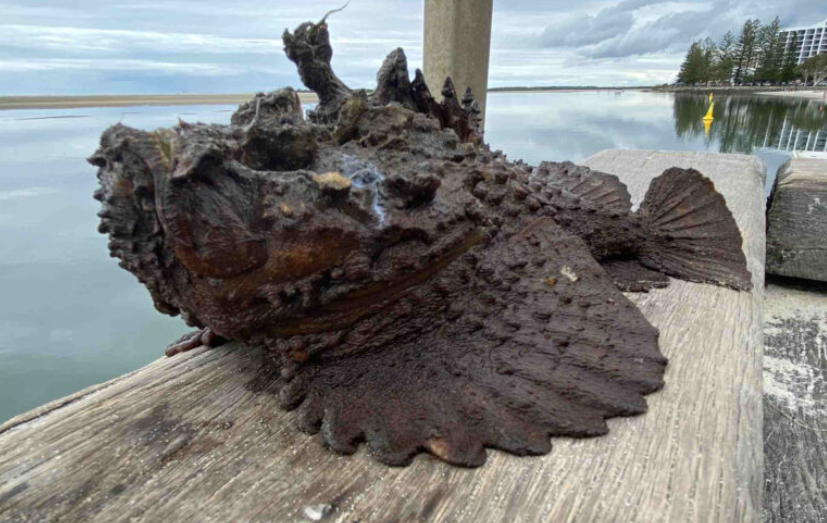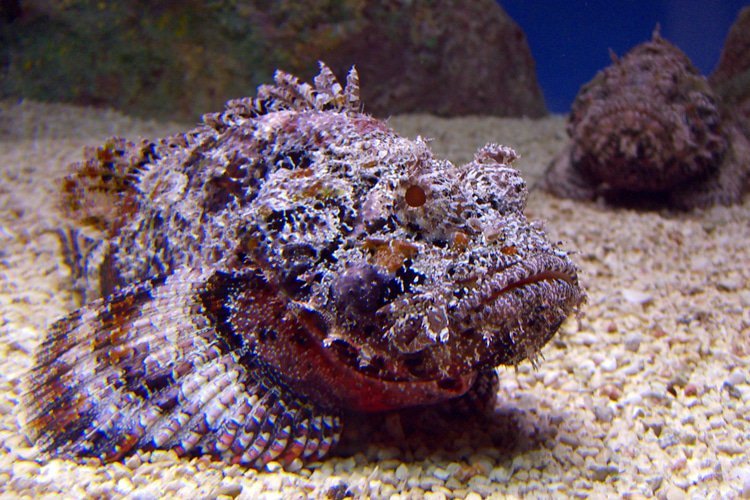Last weekend, an unsuspecting Australian beachgoer came face-to-face with one of the ocean’s deadliest inhabitants — the stonefish. While exploring Lee Point beach near Darwin, Daniel Brown nearly stepped on this highly venomous fish, blending perfectly with the rocks and sand.
The encounter, which Mr. Brown shared on Facebook, unfolded as he and a friend combed the rock pools at low tide. They had set out in search of a blue-ringed octopus, another venomous species, but instead found a stonefish lying in plain sight on the beach.

What Makes the Stonefish So Dangerous?
Known as the most venomous fish in the world, the stonefish poses a lethal threat to humans. This fish can deliver a powerful toxin through sharp dorsal spines if accidentally stepped on. If left untreated, the venom can be fatal, with death potentially occurring within an hour. In addition to being deadly, the pain from a stonefish sting is often described as among the most excruciating experiences.

In his post, Mr. Brown warned others, noting that the stonefish “can inject a powerful toxin through their dorsal spines when stepped on. This toxin can be fatal to humans if left untreated, but no deaths have been recorded in Australia.” Luckily, he and his friend managed to move the stonefish back to the water safely, using only their sandals to avoid direct contact.
How to Avoid a Stonefish Sting
Stonefish are masterfully camouflaged, blending effortlessly into their surroundings, whether among rocks, coral, or sand. The Queensland Health Department advises beachgoers to wear sturdy footwear while exploring rocky or weedy areas to avoid stepping on these hidden dangers. In case of a sting, they recommend immediately calling Triple Zero (000) and seeking medical attention for possible antivenom treatment.
Surviving the Stonefish Sting – Adam Clancy’s Story
For some, surviving a stonefish sting leaves a lasting story — and sometimes a viral moment. Adam Clancy, a photographer from Tenterfield, NSW, had his own encounter with a stonefish last year while wading on Moreton Island. He accidentally stepped on the fish, which delivered an intense sting. Remarkably, Adam managed the pain with humor, sharing his ordeal in a TikTok video with a glass of wine in hand.

“So, the paramedic just told me that most people go into shock and pass out from the intense pain,” he recounted. Despite the high level of pain, which he rated at an “eight out of ten,” Adam stayed calm. He even opted for whisky and Shiraz over painkillers while awaiting medical help.
What Happens During a Stonefish Sting?
When a stonefish injects its venom, it releases toxins through 13 sharp dorsal spines that pierce the skin of unsuspecting swimmers or waders. The pain is instantaneous and often described as unbearable, lasting from hours to several days. In severe cases, stings can lead to paralysis, respiratory distress, shock, or even heart failure.

The Queensland Museum explains that stonefish venom acts swiftly and aggressively, with symptoms including muscular paralysis and difficulty breathing. Though fatalities are rare, the venom is potent enough to require swift medical attention. The museum advises that, in the event of a sting, the victim should leave the water, apply hot water to the affected area, and seek medical help immediately.
Safety Tips for Beach Explorers
Stonefish are commonly found in shallow coastal waters along Australia’s northern shores, where they often rest motionless, camouflaged by their surroundings. To avoid stepping on these hazardous creatures, keep these precautions in mind:
- Wear protective footwear when exploring rocky, sandy, or weedy coastal areas.
- Watch your step in tidal pools and near rocks, as stonefish can blend seamlessly with their surroundings.
- If stung, seek medical help immediately and call emergency services to discuss antivenom treatment.

For those heading to Australia’s beaches, a little extra awareness can go a long way in preventing a close encounter with the stonefish. Staying cautious and informed will help ensure that your beach adventures remain safe and memorable — without any painful surprises from the world’s most venomous fish.








